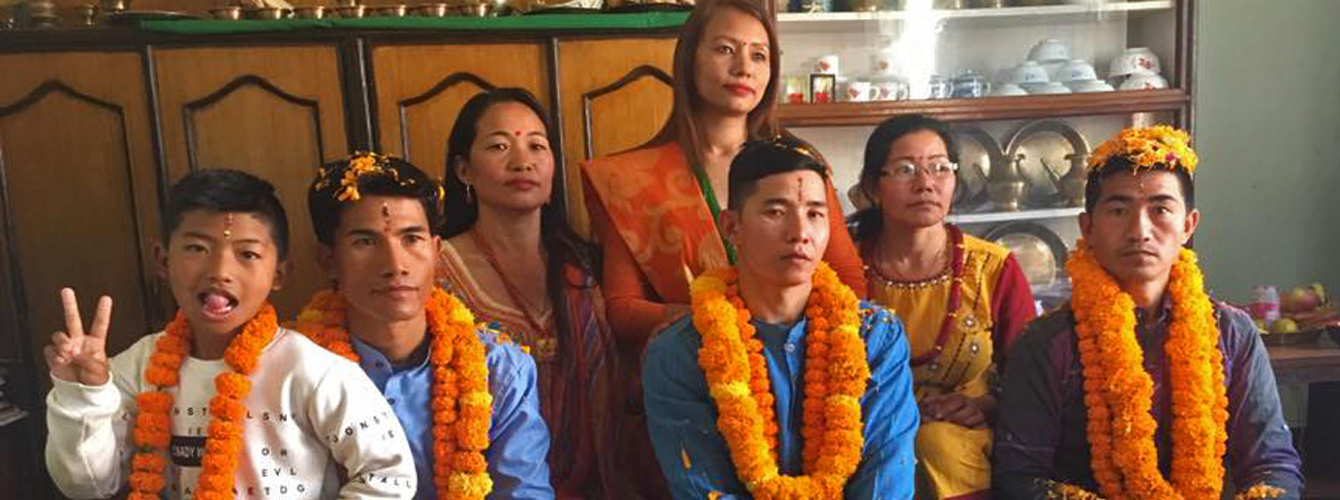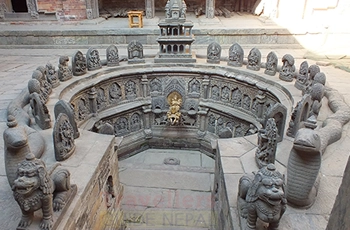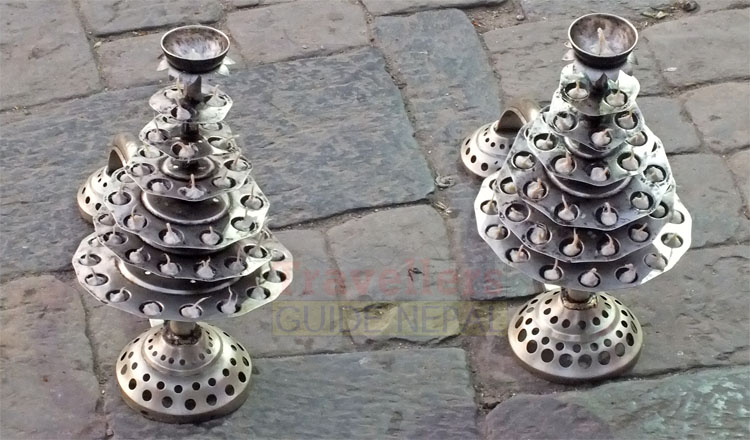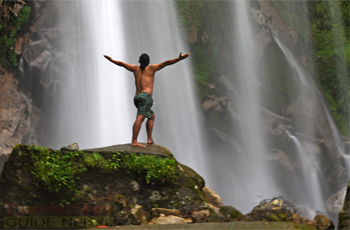
Tihar (also known as Deepawali in India) is a five-day-long Hindu festival celebrated here in Nepal and comes soon after Dashain. It is also called Yama Panchak in Nepal. Tihar or Dee is generally known as the festival of lights and flowers. People lit candles, Butter Lamp (Diyas) both inside and outside the houses to make them illuminate at night. Tihar is the second biggest festival celebrated by Nepali after Dashain.
Hindus celebrate this festival with great significance. Because, it shows not only the intimate relationship between humans and the gods but also the close relationship of animals like crows, cows, oxen, and dogs with human beings. People make rangoli mixing with dry rice and cornflour, sand, and flowers in the courtyard, and inside the house make the rangoli as well as a place of worship for the goddess of wealth Laxmi.
The festival also symbolizes the strong relationship between the Brothers and Sisters. According to the Nepali ritual, the sisters get married and go to a distant village. Once in a year sisters come to meet their brothers during the festival with varieties of food, sweets, and flower garlands and they offer to the brothers. They exchange feelings and brothers give gifts to their sisters.
Day-1 Kaag Tihar (day of the Crow)
On the first day of the festival, Hindus worship the crow. In the Hindu community, the crow is also believed to be the messenger of Yama (God of the death). On this day rice, fruits, sweets, and flowers are decorated on Topari (leaf’s plate) and placed on the balcony. It is important to make sure that the crows are happy, otherwise, they will report the bad news, and bad fortune will happen in the coming year.
Day-2 Kukur Tihar (day of the Dog)
The second day of the festival is the day of the dog called Kukur Tihar. Today people prepare the best food for dogs, present beautiful flower garlands, and Tika on their foreheads. Hindus believe that dogs can guarantee the souls of the dead to get to reach heaven and guard of Yama. In Nepal, dogs play an important role as the gatekeeper.
Day-3 Gai Tihar and Laxmi Puja (day of the cow and worship god of wealth)
On the third day of the festival, Hindus worship Cow and Laxmi “the goddess of wealth”. This day is one of the most important days of the festival. On this day, people get up early and clean the house and courtyard and after taking a bath. The cow is worshiped with garlands and tikas and is fed varieties of food. The Hindus worship the cow as a mother and believed that after death, humans reach heaven by holding the cow’s tail. House and rooms are decorated with different colors flowers and In the evening, inside and outside the house lit butter lamps and candles to make it illuminate and worship Laxmi “the goddess of wealth. In the evening, girls gather to play bhailo (Dancing and Singing) around their locality for entertainment and the household gives them some money, selroti (local bread like a doughnut made from rice flour), and fruits. In the end, the group gives a blessing to the household for prosperity, good health, and wealth.
Day-4 Goru Tihar (Day of the Ox)
On the fourth day of the festival, Hindus worship the Ox. As it is an essential help for the farmers of Nepal. Therefore, people worship the ox once in a year. At this time, the boys’ group gather and play deusi. It’s is Boy’s version of bhailo.
Day-5 Bhai Tika (brother and sister day)
The last day of the festival is known as Bhai Tika, brothers and sisters reunion day. According to Nepali society, daughters leave their own houses after marriage, move to the husband’s house. Mostly they get married in a distant village. Therefore, once a year during Bhai Tika brothers and sisters get together. The sisters worship the brothers with seven colorful Tikas on their forehead and flower garlands and pray for Yama “God of Death” for their brother’s long life. And feed them varieties of food that they have brought. Brothers give gifts to their sisters to make them happy and to keep a close relationship. They honor each other and pray for wellbeing, prosperity, and longevity.
Blossom Expeditions is promoting cultural and religious tourism and helping to preserve the local unique rituals and practices. Join with to experience our exclusive Tradition and celebration…..
Written By: Ambar Tamang
Founder/Guide: Blossom Expeditions
P. O. Box No: 21101, Kapan-12, Kathmandu, Nepal.
Telephone: 977-01-4810388
Mobile: 977-9851123762
WhatsApp/Viber: 977-9841454462
ambartg@yahoo.com
blossomexpeditions@gmail.com
www.blossomexpeditions.com

Introduction to the Patan Heritage Walking Tour A typical Patan Day Tour often highlights the most famous attractions, such as Patan Durbar Square, the Golden Temple, and the Mahabouddha Temple. However, for travelers seeking a deeper connection with local life, ancient art, history, and culture, the city of Patan reveals an abundance of hidden treasures. For this rea...

The Bagmati Aarti at Pashupatinath Temple in Kathmandu is one of the most mesmerizing and important rituals performed in the Hindu religion. The holy Bagmati river, which flows through the temple area, has great significance in Hindu beliefs. It is believed that taking a holy bath in the river will wash away one's sins. Aarti Puja is a Hindu ritual performed around the world...

If you want to get rid of the hustling and bustling city for a while. Want to get lost in the beauty of nature for a while. Like to taste the local food, want to learn people's daily lifestyle of the countryside. The one or two-night trip to Kulekhani-Chitlang Village Tour can be suitable for you....
Comments